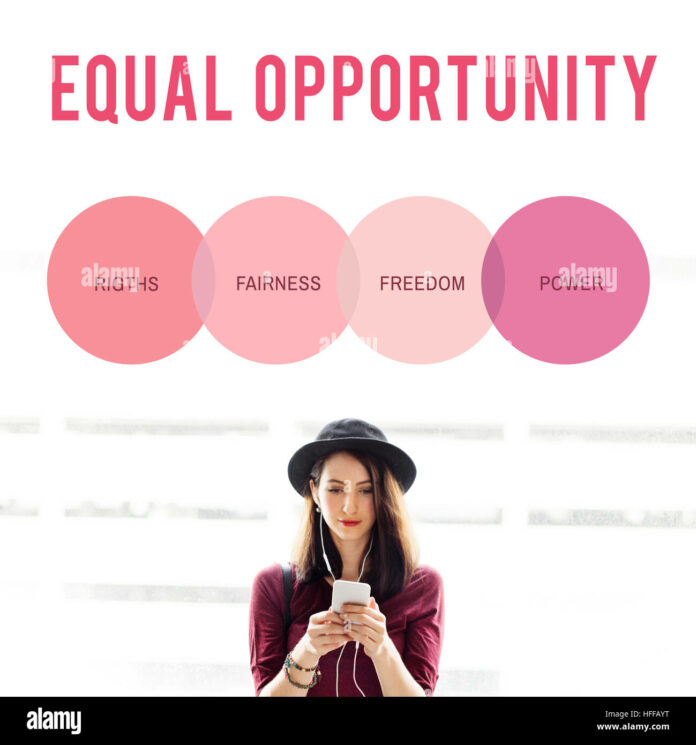In an era marked by technological advancements and progressive ideologies, the question arises: does the modern world genuinely afford women equal opportunities? The legacy of historical gender inequality persists, yet contemporary society promises a paradigm shift that aligns with principles of equity and justice. Exploring this intricate subject necessitates an examination of multifaceted dimensions, including economic, political, and social spheres.
Women have entered the workforce in unprecedented numbers, signaling a transformation in both perception and participation. However, economic disparities remain pronounced. Despite significant strides, women continue to earn less than their male counterparts, manifesting a pervasive wage gap. The World Economic Forum’s Global Gender Gap Report underscores that, on average, women earn approximately 63% of what men earn—a staggering inequality that raises fundamental questions about the morality of our economic systems. Factors contributing to this disparity include occupational segregation, underrepresentation in leadership roles, and the devaluation of professions predominantly held by women.
In examining the economic landscape, one must consider the role of education and skill acquisition. Statistics reveal that women have outperformed men academically in various contexts; however, this educational success frequently fails to translate into equal employment opportunities. The phenomenon of “credentialing paradox” emerges, wherein women, despite their qualifications, find themselves accompanied by systemic barriers that preclude their advancement. This situation elucidates the need for organizations to implement equitable hiring practices and mentorship programs aimed specifically at fostering female talent within the workplace.
Moreover, the modern gig economy presents a double-edged sword. While it offers flexibility and new opportunities for self-employment, it also perpetuates precarious employment conditions that disproportionately affect women. The inflexible nature of gig work often complicates the balance between professional aspirations and familial responsibilities. As caregivers, many women navigate the complexities of maintaining employment while meeting the demands of domesticity. Hence, the evolving work environment requires a reevaluation of labor policies, ensuring that they account for the diverse needs of women in various roles.
Political Participation: The Representative Dilemma
The political sphere has witnessed an upward trajectory in female representation, yet it still embodies a troubling landscape in terms of genuine equality. Women occupy only 25% of parliamentary seats worldwide, illustrating the persistent underrepresentation within decision-making bodies. The absence of diverse voices in governance stifles holistic policy development and perpetuates inequities. Feminist political theorists argue that women’s presence in leadership positions is not merely a numbers game; it is integral to the creation of policies that address women’s unique challenges, including reproductive rights, gender-based violence, and healthcare access.
Furthermore, the notion of intersectionality, coined by Kimberlé Crenshaw, extends this discourse into the realm of race, class, and sexual orientation. It emphasizes that not all women experience inequality uniformly—women of color, low-income women, and LGBTQ+ individuals face additional layers of bias that compound their marginalization. As such, political discourse must scaffold the experiences of disenfranchised groups, ensuring that legislative measures are inclusive and equitable.
The role of grassroots movements cannot be overlooked. Women-led movements, such as Me Too and Time’s Up, have galvanized global attention towards issues of sexual harassment, domestic violence, and workplace discrimination. These movements have sparked conversations that challenge the status quo and advocate for systemic change. Nevertheless, the momentum of such movements must transcend social media engagement to catalyze substantive legislative reforms that address these pervasive issues at their roots.
Sociocultural Dynamics: Redefining Norms and Expectations
The sociocultural fabric intricately weaves the narratives of gender roles, often dictating the expectations placed upon women. Despite advances in various sectors, societal norms continue to impose limitations that hinder women’s agency. The pressure to conform to traditional roles, encompassing marriage, motherhood, and self-sacrifice, underscores a cultural belief system that privileges male authority and limits female autonomy.
Media representations play a pivotal role in shaping societal perceptions of women. They have the potential to either reinforce stereotypes or challenge antiquated narratives. The portrayal of women in leadership roles, as well as pluralistic depictions of their identities and ambitions, cultivates a cultural milieu that fosters empowerment. Campaigns promoting female-centric narratives encourage young girls to aspire toward diverse career paths that transcend conventional boundaries.
Education remains a cornerstone in dismantling these harmful stereotypes. Curricula that incorporate gender studies and promote critical thinking can instill values of equality from an early age. Expecting both boys and girls to engage with concepts of gender equity cultivates an environment that encourages mutual respect and collaboration, thus reimagining the societal blueprint for gender relations.
Legislation and Policy: The Path Forward
To navigate toward a more equitable society, robust legislation is a pivotal instrument. Policies aimed at promoting gender equality—such as parental leave, affordable childcare solutions, and workplace protections—constitute essential components of a comprehensive strategy. Governments must prioritize gender-responsive budgeting, ensuring that public resources are allocated to initiatives that mitigate disparities.
International frameworks, such as the United Nations’ Sustainable Development Goals, particularly Goal 5 on gender equality, provide a guiding compass. It emphasizes the necessity for nations to take actionable steps toward dismantling barriers that impede women’s progress. As nations strategize to achieve these goals, it becomes imperative that they engage women in policymaking processes, amplifying their voices in discussions that directly affect their lives.
Conclusion: A Collective Endeavor for Change
While the modern world reflects a landscape rich with potential for women, it is apparent that equal opportunity remains elusive. Acknowledging the complexities of economic, political, and sociocultural dimensions is crucial in grappling with the nuances of gender inequality. As society stands at the crossroads of progress, the collective responsibility falls upon all stakeholders—governments, organizations, and individuals—to champion the cause of gender equity. As the journey continues, genuine commitment to transforming societal norms, restructuring institutions, and fostering solidarity can indeed pave the way toward a future where women not only participate but thrive on an equal footing, bringing forth a world enriched by diversity and empowerment.





























